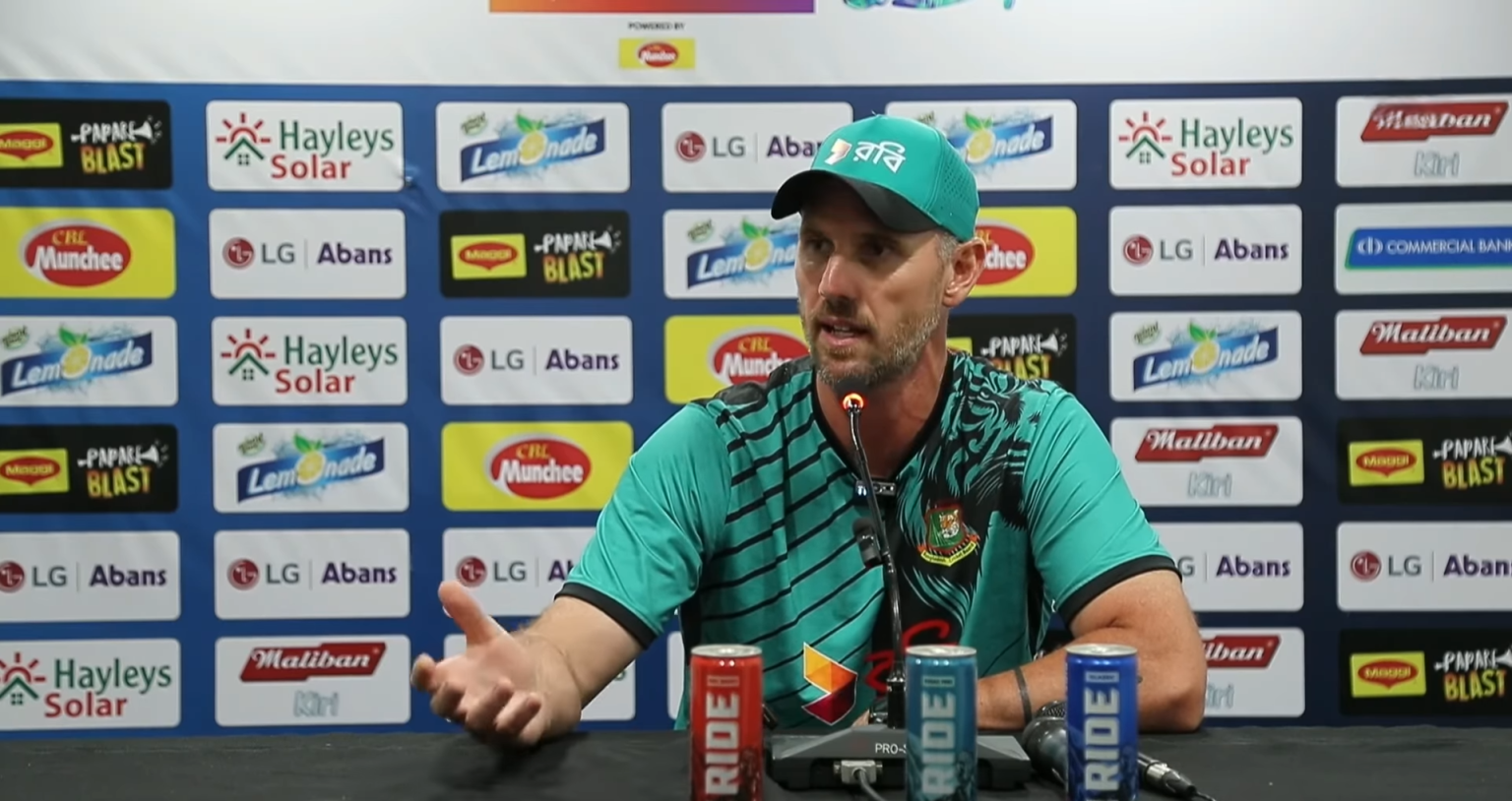Bangladesh fast-bowling coach Shaun Tait admitted his pacers missed a key opportunity with the new ball on the third day of the Galle Test against Sri Lanka, as the hosts surged to 368 for 4 in response to Bangladesh’s first-innings total of 495.
Openers Hasan Mahmud and Nahid Rana failed to make an early breakthrough with the new ball, despite operating for the first 20 overs. It was left-arm spinner Taijul Islam who finally struck in the 13th over, but by the end of the day, Sri Lanka had reduced the deficit to just 127 runs, led by a masterful 187 from Pathum Nissanka.
“It is a good batting wicket, and it was difficult conditions for fast bowlers today,” Tait said. “They toiled hard. They gave effort. We could have started better with the first new ball. We probably missed out. They know that. That’s all you can ask for.”
The former Australian pacer, overseeing his first Test as Bangladesh’s fast-bowling coach, acknowledged that conditions played into the hands of batters.
“We batted for two days. It is one of those good batting wickets,” he said. “I think [Sri Lanka] batted really well. They are no pushovers. This is the team that was competing for the WTC final. They are a good side with good batters.”
Nissanka led Sri Lanka’s charge with a career-best 187, hitting 23 boundaries and a six during his 256-ball innings. The Galle surface, known for aiding spin from the third day, remained largely benign, offering little to Bangladesh’s spinners.
“I think the wicket is pretty good,” Tait remarked. “It hasn’t changed a great deal. It probably hasn’t spun as much as maybe people thought it would on the third day. Normally, Galle starts to turn a bit more. It turned a little but nothing significant. There are still a couple of days left. Test cricket can change pretty quickly.”
Compounding Bangladesh’s challenge was the absence of Mehidy Hasan Miraz due to illness, leaving them with only four frontline bowlers. Nahid Rana, in just his eighth Test, struggled with both control and economy, conceding 80 runs in 16 wicketless overs as he pursued aggressive lines.
“Anyone who bowls that pace should get the new ball from time to time,” said Tait. “I don’t know, going forward, who is going to take the new ball. This is my first Test. We have two fast bowlers. He has to take the new ball. He is absolutely fine taking the new ball.”
Tait also spoke about managing the expectations placed on Rana, one of Bangladesh’s most promising young fast bowlers.
“It is early in his career. He burst onto the scene. There’s a lot of attention and expectation on him. I don’t know if Bangladesh have ever had a fast bowler as exciting as him. There’s a little bit of pressure on him from the media and public. It is up to me to work through that with him as the bowling coach.”
There was a glimmer of hope for Bangladesh late in the day as Mahmud, returning with the second new ball, bowled Nissanka with a well-executed inswinger that shattered the stumps.
“He struck the middle stump – it was a good ball,” Tait said. “You have to take little wins to the shed on this wicket. At the end of the day, it is a positive.”


